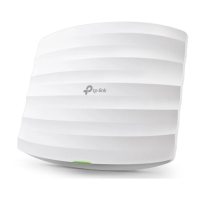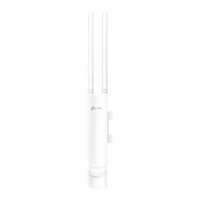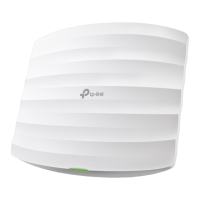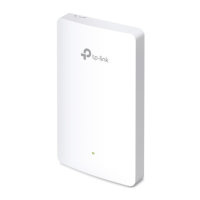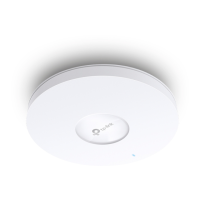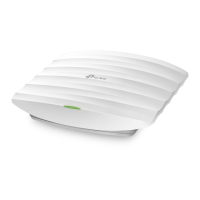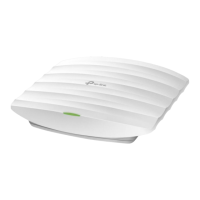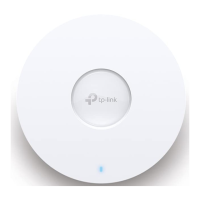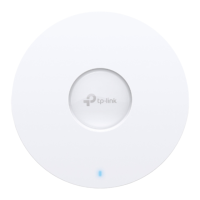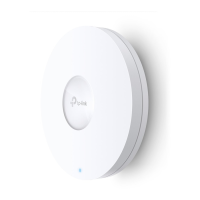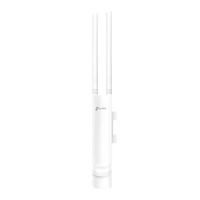Do you have a question about the TP-Link Omada EAP230-Wall and is the answer not in the manual?
Explains how to choose between Controller Mode and Standalone Mode for managing EAPs.
Details the physical connections required to set up EAPs and connect clients.
Guides users on accessing the EAP interface and securing the wireless network.
Covers settings for SSID, security, and advanced wireless configurations.
Explains how to create and configure Service Set Identifiers (SSIDs) for wireless networks.
Details advanced wireless parameters such as Radio Setting, Load Balance, Airtime Fairness, and More Settings.
Sets up captive portal authentication for guest access.
Displays EAP status, device information, and resource utilization.
Displays information about connected wireless clients and their activity.
Configures EAP's IP address mode (Dynamic/Static) and fallback IP settings.
Provides instructions for rebooting or resetting the EAP to factory defaults.
Configures SSIDs, portal, and scheduler for the example network.
Explains how to choose between Controller Mode and Standalone Mode for managing EAPs.
Details the physical connections required to set up EAPs and connect clients.
Guides users on accessing the EAP interface and securing the wireless network.
Covers settings for SSID, security, and advanced wireless configurations.
Explains how to create and configure Service Set Identifiers (SSIDs) for wireless networks.
Details advanced wireless parameters such as Radio Setting, Load Balance, Airtime Fairness, and More Settings.
Sets up captive portal authentication for guest access.
Displays EAP status, device information, and resource utilization.
Displays information about connected wireless clients and their activity.
Configures EAP's IP address mode (Dynamic/Static) and fallback IP settings.
Provides instructions for rebooting or resetting the EAP to factory defaults.
Configures SSIDs, portal, and scheduler for the example network.
| 2.4 GHz | Yes |
|---|---|
| MIMO type | Multi User MIMO |
| Frequency band | 2.4 - 5 GHz |
| Cabling technology | 10/100/1000Base-T(X) |
| Networking standards | IEEE 802.11ac, IEEE 802.11b, IEEE 802.11g, IEEE 802.11n, IEEE 802.3af, IEEE 802.3at |
| Virtual LAN features | Port-based VLAN, VLAN mapping |
| Ethernet LAN data rates | 10, 100, 1000 Mbit/s |
| Transmitting power (CE) | 20 - 23 dBm |
| Maximum data transfer rate | 1167 Mbit/s |
| Maximum data transfer rate (5 GHz) | 867 Mbit/s |
| Maximum data transfer rate (2.4 GHz) | 300 Mbit/s |
| Storage temperature (T-T) | -40 - 70 °C |
| Operating temperature (T-T) | 0 - 40 °C |
| Storage relative humidity (H-H) | 5 - 90 % |
| Operating relative humidity (H-H) | 10 - 90 % |
| Compatible operating systems | Microsoft Windows XP, Vista, Windows 7, Windows 8, Windows10 |
| Number of products included | 2 pc(s) |
| Security algorithms | 64-bit WEP, 128-bit WEP, 152-bit WEP, SNMP, SNMPv2, WPA, WPA-PSK, WPA2-Enterprise, WPA2-PSK |
| Number of SSID supported | 16 |
| Service Set Identifier (SSID) features | Multiple SSIDs |
| Placement | Wall |
| Product color | White |
| LED indicators | Operation |
| Antenna type | Internal |
| Antenna features | Integrated antenna |
| Antennas quantity | 2 |
| Antenna gain level (max) | 3.6 dBi |
| Power consumption (max) | 25.5 W |
| Power consumption (typical) | 9 W |
| WAN connection | Ethernet (RJ-45) |
| USB 2.0 ports quantity | - |
| Ethernet LAN (RJ-45) ports | 1 |
| Harmonized System (HS) code | 85176990 |
| Package depth | 130 mm |
| Package width | 118 mm |
| Package height | 47 mm |
| Package weight | 210 g |
| Sustainability certificates | CE, RoHS |
| Width | 86.8 mm |
|---|---|
| Height | 30.2 mm |

